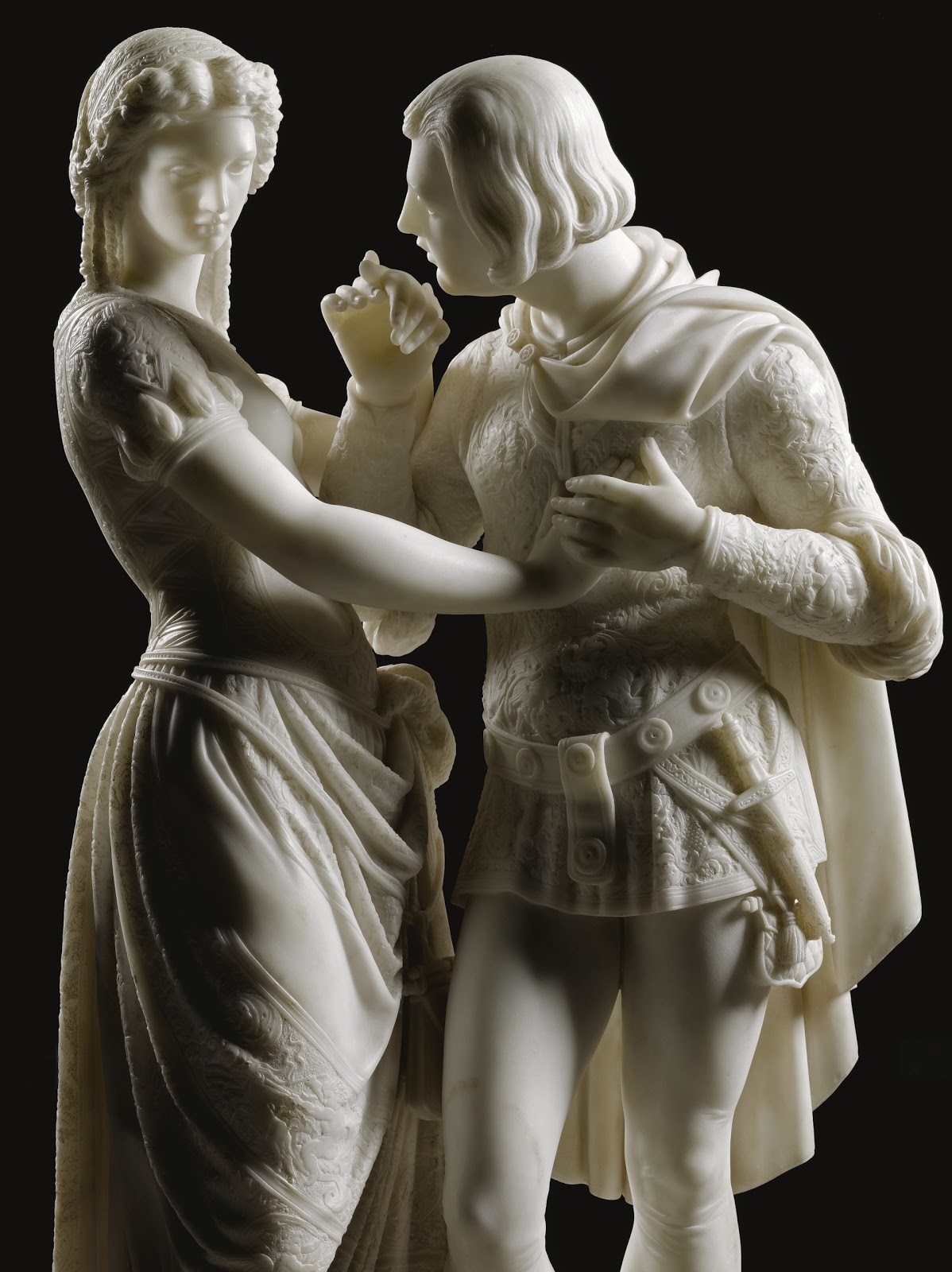John Atkinson Grimshaw (1836-1893) was an British Victorian artist who became famous for his sombre views of the dockyards and his nocturnal scenes of urban lanes with leafless trees silhouetted against the moonlight sky.
During his later life, he became a close friend of James McNeill Whistler who admired his work and admitted: "I considered myself the inventor of nocturnes until I saw Grimmy’s moonlight picture".
For biographical notes -in english and italian- and other works by Grimshaw see Atkinson Grimshaw | Victorian-era painter.
Home » Tutti i post

John Atkinson Grimshaw | Moonlight painter

Leonardo da Vinci | Come la pittura avanza tutte le opere umane..
Trattato della Pittura - Parte prima /15
L'occhio, che si dice finestra dell'anima, è la principale via donde il comune senso può piú copiosamente e magnificamente considerare le infinite opere di natura e l'orecchio è il secondo, il quale si fa nobile per le cose racconte, le quali ha veduto l'occhio. Se voi istoriografi, o poeti, o altri matematici, non aveste con l'occhio visto le cose, male le potreste voi riferire per le scritture.

Leonardo da Vinci | Come la scienza dell'astrologia nasce dall'occhio..
Trattato della Pittura
- Parte prima /13
Nessuna parte è nell'astrologia che non sia ufficio delle linee visuali e della prospettiva, figliuola della pittura; perché il pittore è quello che per necessità della sua arte ha partorito essa prospettiva, e non si può fare per sé senza linee, dentro alle quali linee s'inchiudono tutte le varie figure de' corpi generati dalla natura, e senza le quali l'arte del geometra è orba.

Édouard Cortès | Le Poète Parisien de la Peinture
Édouard Cortès (1882-1969) è conosciuto come "Le Poète Parisien de la Peinture" od "Il poeta parigino della pittura" per la varietà dei suoi paesaggi urbani parigini, rappresentati in diverse condizioni atmosferiche e notturne.
Edouard Léon Cortès è stato un pittore francese di origini francesi e spagnole, figlio di Antonio Cortés y Aguilar (1827-1908), rinomato pittore della corte spagnola, e nipote di André Cortès, artigiano.

Ferdinando Vichi | Group of Putti Musicians, 1875-1899
Like many other late nineteenth-century sculptors, Ferdinando Vichi (1875-1945) often took inspiration from Romantic and Tender subjects.
His compositions are varied in subject matter, ranging from Romantic busts, women and children to orientalist themes and Renaissance-inspired models.

Pio Fedi | Love story of Dionora and Ippolito
Pio Fedi - Dionora de Bardi and Ippolito Buondelmonti
In the present sculpture, Pio Fedi (1816-1892) presents us with an image of the courtship of Dianora. Ippolito's gently persuasive gesture conveys his intense and immediate affection for Dianora, whilst her apparent reticence highlights the agonistic relationship between their two families and the difficulties associated with their union. Pio Fedi's training as a goldsmith and engraver is evident in the virtuoso carving of the rich fabrics and differing surfaces. The intricacy of the carving, together with the small scale of the group, lends to it a precious, jewel-like quality. The signature compares closely with that of Pio Fedi's Il sospetto in the Ashmoleon, also dated 1872, and which, according to Nicholas Penny, may have been sculpted as a special piece by Pio Fedi himself.

Antoine Bouvard | A Venetian Scene
Antoine Bouvard Senior, also known as Marc Aldine (1870-1956) painted Venetian scenes and exhibited his works in Paris and Venice.
He was born at St. Jean-de-Bournay in L'Isere in 1870.
He trained as an architect and studied art and architecture under Constant-Dufeus, at the Ecole des Beaux-Arts in Paris.
He became the Director of Architectural Services for the Seine, and was responsible for the construction of the Bourse du Travail and the Boulevard Morland in Paris.
Iscriviti a:
Commenti (Atom)










